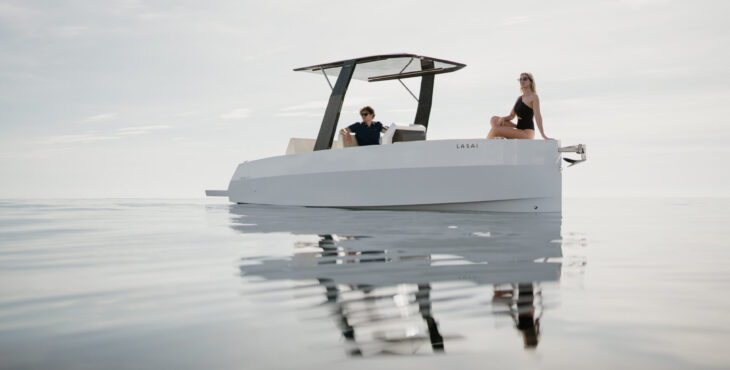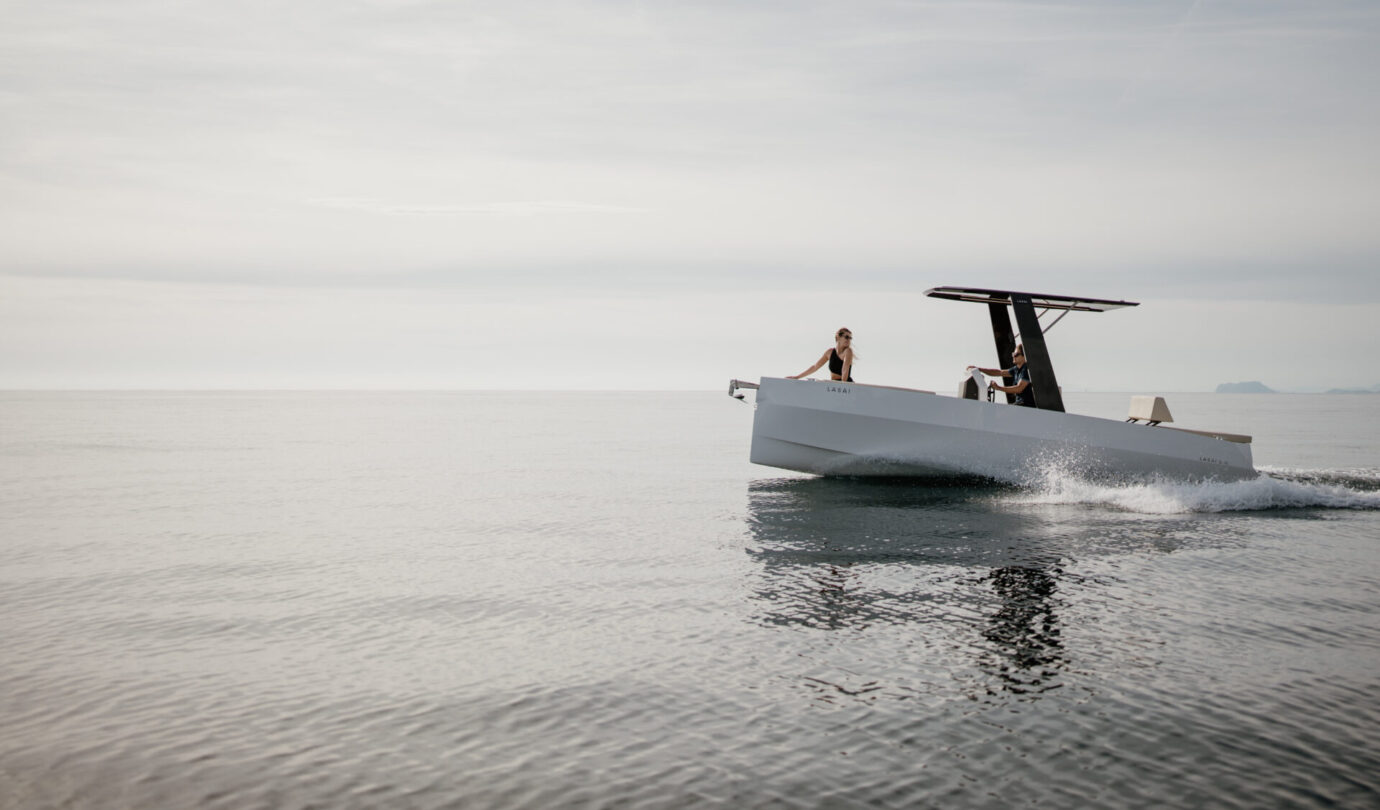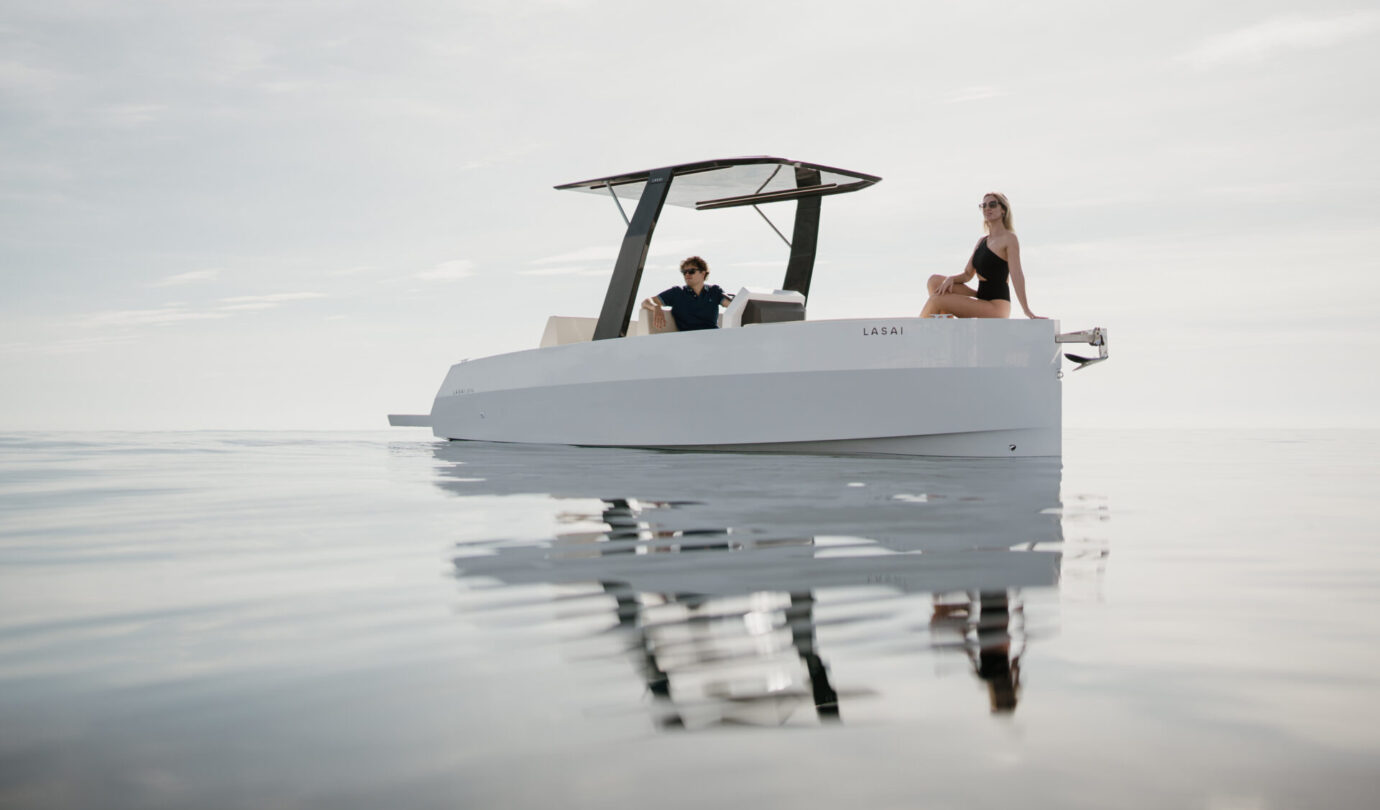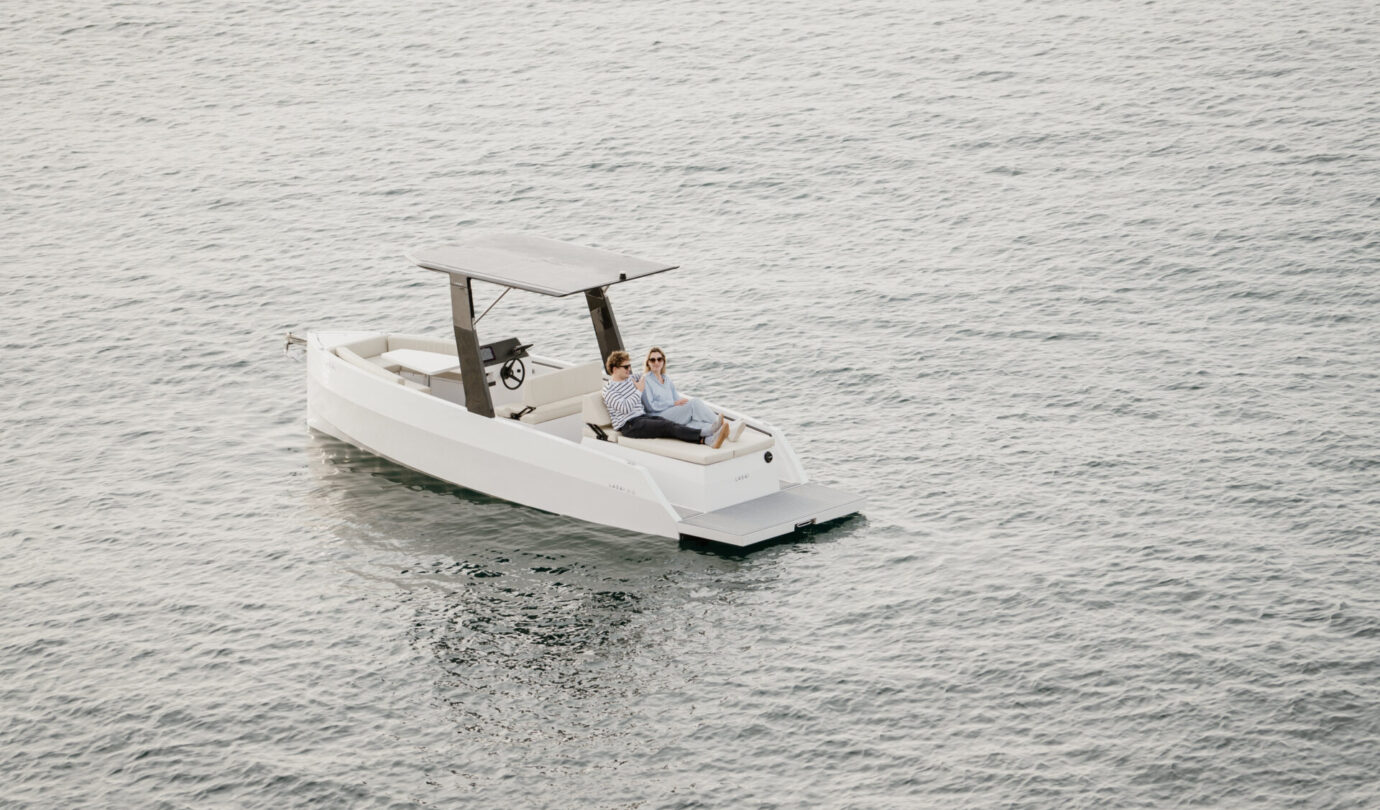Lasai 22 GL: Towards efficiency
For the design of the new hull of the Lasai 22GL, it was decided to define it with hydrodynamic lines more similar to those of a sailboat than to those of a motorboat

For the design of the new hull of the Lasai 22GL, it was decided to define it with hydrodynamic lines more similar to those of a sailboat than to those of a motorboat
The Basque shipyard focused on the construction of electric boats Lasai continues to advance and presents for this season an improved version of its flagship model. With a completely redesigned hull, it improves its efficiency and achieves more agile and faster navigation.
Founded to accelerate the transition to electric mobility in recreational boating in our country, the objective of the investment group that supports the project, Lasai continues to move forward to create profitable boats that meet the speed and autonomy requirements demanded by most boaters. For this reason, the shipyard based at the Automotive Intelligence Center (AIC), 15 km from Bilbao, invests a large part of its budget in R&D.
Throughout the past years , its team of engineers was working to ensure that the new units and models are the most efficient on the market at cruising speeds of between seven and ten knots. With this and with new engines, they have managed to get their new units to reach 100 miles of autonomy at a cruising speed of eight knots. The reduction in weight thanks to the increase in the density of the new batteries and hydrodynamic improvements have allowed them to increase their efficiency by twenty percent.
Furthermore, improvements in the power of solar panels together with the aforementioned density of batteries allow the length of its boats to be increased. This also translates into a wider range of potential customers. In this regard, in 2026 it plans to introduce a new model with a nine-metre long cabin with similar features to the 22 GL. In addition, taking into account the speed of development of technology, it has assumed the objective of putting a 12-metre boat in the water by 2027.
DECK AND COCKPIT
The deck layout that we can see on the new 22 GL is basically the same as that already seen on the 20 GL model that we had the opportunity to test at the last Palma Boat Show in 2023. But certain improvements and finishes are introduced that the end customer will appreciate, such as a new steering console with a more functional design, new upholstery and some details that increase the final quality. A very interesting novelty is the possibility of easily folding down or removing the hard top, which facilitates its transport by land means or navigation through canals, where there may be low-height bridges.
The exterior design maintains the elegant and modern lines adopted from the start. With well-defined and practical areas, the Lasai 22 GL hides the electric motors under the cover that forms the sundeck. On both sides of this, the side steps allow very easy access to the bathing platform. The optional equipment package includes the possibility of easily transforming the dinette on the bow deck into a sundeck.
We find it interesting to note that as standard this model is offered equipped with Seadeck synthetic teak wood and a nine-inch Simrad multifunction screen. Optionally, future owners can choose different finishes for the deck and upholstery, as well as increase the size of the multifunction screen and its applications. The shipyard also provides its customers with a good list of equipment that allows each model to be configured and customized, according to the owners’ preferences, with refrigerators, bimini tops…
NAVIGATION AND CONCLUSIONS
For the design of the new hull of the Lasai 22GL, it was decided to define it with hydrodynamic lines more similar to those of a sailboat than to those of a motorboat, which according to its own designers improves the effectiveness for an electric boat of these characteristics. Another major change is found in the stern, where two Pods have been installed that provide greater maneuverability and efficiency.
With a 44 kW battery rack expandable to 60 kW, and 700 W of solar panels on the rigid roof, its autonomy is increased to 100 miles at a speed of eight knots, also achieving a higher top speed that now reaches 15 knots. With this new model, the Spanish shipyard continues its evolution to achieve its goal of positioning itself as one of the European leaders in solar electric boats with a highly reliable product, features adapted to customer needs and an attractive design.
FEATURES
Overall length: 6.80 m
Displacement: From 980 Kg
Beam: 2.22 m
Passengers: 6
CE Certification: C
Builder: Lasai
Engines: Up to 40 kW.
Battery capacity: 62 kWh.
Solar panel power: 700 W
Autonomy: around 26 miles at maximum speed and around 90 miles at cruising speed of 6 knots.
Price: From 59,400 or 85,000 euros plus taxes
Victoria Calderon







